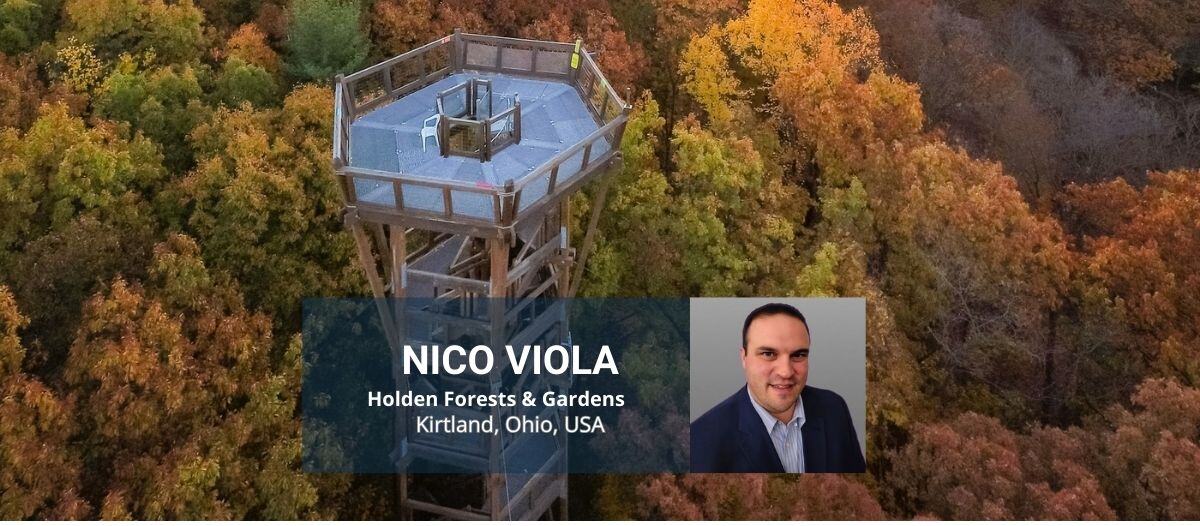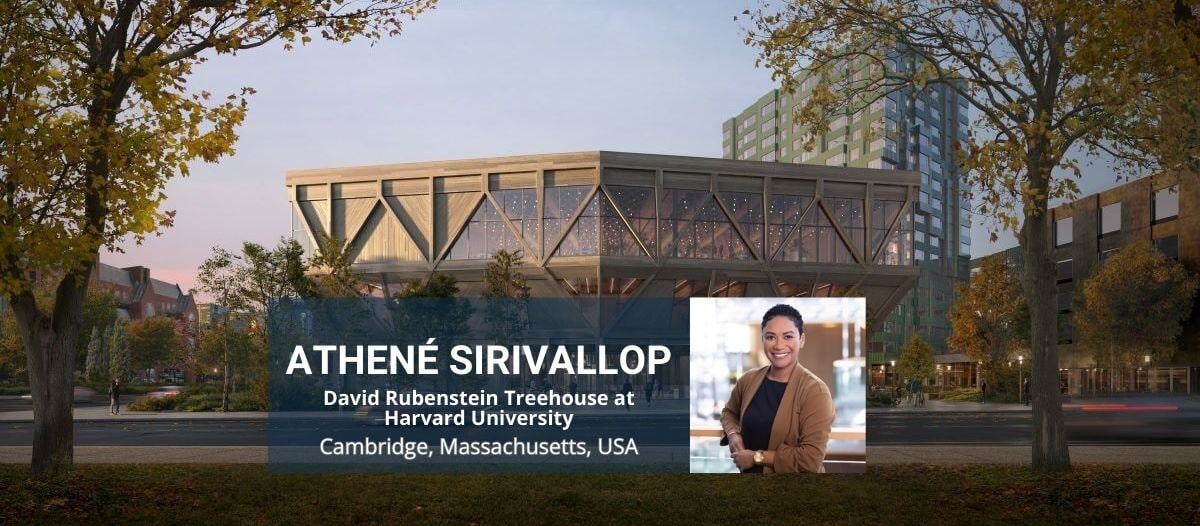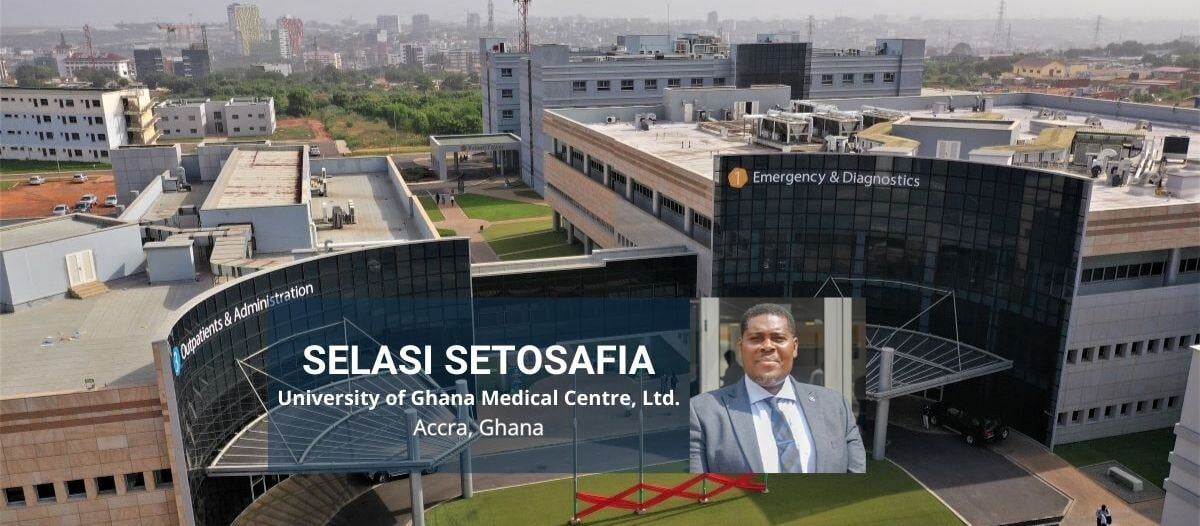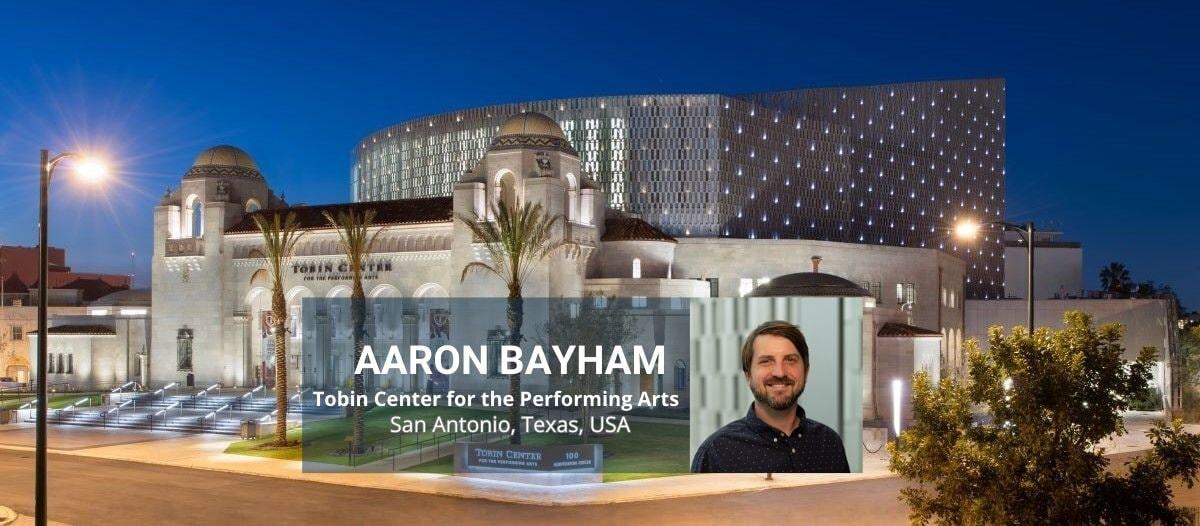Tell us about yourself and how you got into FM.
Nico Viola: My journey into FM started as a child working with my grandfather at his rental properties. As I got older, he gave me more responsibility to take care of repairs, collecting rent, snow removal and whatever was needed to keep the properties in top shape. I went to trade school to get certified in HVAC-R and worked as a technician while going to college in the evenings for business administration. By my mid-20s, I was working as a director of facilities managing more than 700 apartments and a staff of 20. I ended up leapfrogging from that into project management and took a position as a national project manager for a large property restoration company and eventually became director of operations for another restoration company before joining Holden Forests and Gardens as director of facilities in 2020. In the last few years, my focus has turned to sustainable facilities practices.
 What is Holden Forests & Gardens?
What is Holden Forests & Gardens?
Holden Forests & Gardens (HFG) is comprised of two campuses: Holden Arboretum located in Kirtland, Ohio, USA, and Cleveland Botanical Gardens located in nearby Cleveland, Ohio. HFG connects people with the wonder, beauty and value of trees and plants, to inspire action for healthy communities. The Holden Arboretum is a 3,600-acre outdoor living museum that promotes the beauty and importance of trees and plants to create sustainable healthy communities in the Great Lakes region. HFG is the 14th largest public garden in the United States.
What is day-to-day life like at HFG?
 Every day is unique. Like most FMs, I spend half my time planning, budgeting, training and working with internal and external partners on projects that are happening simultaneously. We have been performing energy audits, applying for grants for energy upgrades and making changes to our automation to use less power and HVAC. In the past few years, I have been evaluating our fleet and divesting older, inefficient trucks, carts, utility vehicles and machines, swapping them out for EVs, hybrids or more efficient models where possible. In the past couple of months, we have taken possession of our first hybrid police interceptor and a hybrid pickup truck for facilities. I am big on technology that helps us run leaner and greener. I lead a team of three technicians at each campus, plus a mechanic and a facilities coordinator who is a great asset in dealing with the day-to-day issues that arise. We are constantly bringing in different shows and exhibits. Throughout the year, there are many smaller events: weddings, corporate events, educational events, student groups and other situations we accommodate. Every available hour, something is happening someplace on our campuses! Through it all, we make sure that things are maintained, repaired, replaced and upgraded. It doesn’t always go off as planned. Recently, we had a contractor who accidentally hit a 3-inch gas main, which resulted in an evacuation of part of the arboretum campus. Thankfully, there were no injuries, and we were back online the next day; but it’s events like those that keep me up at night.
Every day is unique. Like most FMs, I spend half my time planning, budgeting, training and working with internal and external partners on projects that are happening simultaneously. We have been performing energy audits, applying for grants for energy upgrades and making changes to our automation to use less power and HVAC. In the past few years, I have been evaluating our fleet and divesting older, inefficient trucks, carts, utility vehicles and machines, swapping them out for EVs, hybrids or more efficient models where possible. In the past couple of months, we have taken possession of our first hybrid police interceptor and a hybrid pickup truck for facilities. I am big on technology that helps us run leaner and greener. I lead a team of three technicians at each campus, plus a mechanic and a facilities coordinator who is a great asset in dealing with the day-to-day issues that arise. We are constantly bringing in different shows and exhibits. Throughout the year, there are many smaller events: weddings, corporate events, educational events, student groups and other situations we accommodate. Every available hour, something is happening someplace on our campuses! Through it all, we make sure that things are maintained, repaired, replaced and upgraded. It doesn’t always go off as planned. Recently, we had a contractor who accidentally hit a 3-inch gas main, which resulted in an evacuation of part of the arboretum campus. Thankfully, there were no injuries, and we were back online the next day; but it’s events like those that keep me up at night.
 What makes HFG unique and what kind of unique challenges do you face managing the facility and grounds?
What makes HFG unique and what kind of unique challenges do you face managing the facility and grounds?
HFG is many things to many people. If you asked the public, they would say we are a park or a museum. If you asked a teacher, they would say we are a fun place to have an educational field trip. If you asked our research department, they would tell you we are a world-class research institute. To me, we are all the above. The Cleveland Botanical Gardens (CBG) campus consists of 11 acres of gardens, a two-story below-ground parking garage, a 90,000-square-foot building and a five-story, 35,000-square-foot biome, which is the largest in Ohio. CBG is in University Circle, which has the highest concentration of museums and cultural institutions of any place in the United States. The Holden Arboretum consists of more than 3,600 acres of land that houses a visitor center, administration and education buildings, a large service yard and the Long Science Center, where our research team is housed. We also have a satellite research center in Madison, Ohio.
CBG’s most unique feature is the biomes. It is divided into three spaces: a working glass house, Madagascar and Costa Rica. Each space has its own custom built air handler, ventilation and humidification systems. I cannot overstate how complicated it is to keep Costa Rica at 80F with 60 percent relative humidity when it is 20 degrees outside in Cleveland in February! Even with all the assistance the building automation provides, it still requires daily oversight and constant adjustments. Many rare plants, birds, butterflies, frogs, iguanas and other animals call the biomes their home, so we are constantly concerned about their well-being.
As for the Holden Arboretum, it’s more like managing a city. We maintain countless miles of roads, trails and parking areas. Miles of infrastructure for irrigation and utilities. We have a private water system and sewage treatment plant. One of my team members maintains a Class A operator’s license to operate our water systems. We have many large features and attractions that require inspection and upkeep. The Murch Canopy Walk and Kalberer Emergent Tower are the largest. The tower is 12 stories tall and gives you a bird’s eye view of the campus. The Canopy Walk was built to be ADA accessible and reaches about six stories above the forest floor. Both offer unique views of the campus. We are finishing replacement of the staircases that access Pierson’s Creek Valley. We have our own police department, and I spend a decent amount of time interacting with the chief to make sure we are on top of any security issues that may arise. We have a large fleet of trucks, side-by-sides, golf carts and heavy equipment. How many FMs have a steam roller in their fleet?
Managing living collections is unique. If we were to lose power or heat in the biomes, rare plants and animals could die, and some irreplaceable. At both campuses, we occasionally get bad storms that cause damage to structures and plants. It’s painful when a specimen that has been on the campus for generations is damaged or destroyed. Our chief of police has developed disaster plans, which facilities assisted in crafting to make sure that we are prepared for as many situations as possible.
 What is most challenging in making this all happen?
What is most challenging in making this all happen?
We must do all this in a way that the public sees the magic but does not see the magician. We work hard every day to make sure all our buildings and grounds are in top condition without the public seeing what is happening. There is a theatrical aspect to what we do. Museums and cultural institutions are unique in that the buildings and grounds are not the background, but the star of the show. It makes our work much more important.
How much space do you manage and how is it used?
CBG is roughly 90,000 sq. ft., plus 35,000 sq. ft. of biomes on 11 acres. About half of that is public space while the rest are offices or support space.
The Holden Arboretum consists of more than 3,600 acres of land with around 15 buildings. Half of the buildings are public spaces for visitors, education and events. The rest of the space is used for research, administration, or facilities and horticultural support. We are expanding our service yard as we have outgrown our current space. We completed a new composting area and retention pond last summer. The foundation and floor are in for our new 9,600 sq. ft. vehicle and equipment storage building, and the steel erector will be putting up the building soon.
Tell us about your FM team.
I have a wonderful team that makes me look good! Some members of my team have been with the organization for over 25 years, and that’s great because they know what needs to be done and have been empowered to make decisions that they feel are best for the organization. This is a big help, because I divide my time between both campuses. It is great knowing I have people I can trust in my absence. I take everyone’s opinions into consideration as the technicians and housekeepers are the eyes and ears of our organization. They see what’s working and not working in real time and report what changes need to be made and why. Each member of my team has a unique skill set, which you need when you’re as diverse an organization as we are. My biggest concern with my team is how to fill the vacuum of knowledge that will happen when some of them retire in the next few years.
What are some FM challenges you face at Holden that are common across the FM industry?
No matter the building, a leak is a leak. Yes, the biomes are complicated and specialized, but just like my FM peers, much of my time is spent budgeting, planning and dealing with the inevitable emergency. Every FM has plenty of war stories: the fire that broke out on Christmas Eve or the major water leak that happened 20 minutes before the opening of a show. It comes with the gig.
 How do you manage your decision-making process with so many moving pieces?
How do you manage your decision-making process with so many moving pieces?
With every decision I make, I use the rule of five: How will this decision affect the organization five minutes from now, five days from now, five weeks from now, five months from now and five years from now? In FM, you are constantly refocusing on short- and long-term goals. Some reactions are knee-jerk. During an emergency, you go with your gut based on experience. But when the dust settles, you must take a step back to look at the big picture and make sure that your decisions are what’s best for the organization well into the future.
What do you like best about what you do?
I love knowing that the work that I do has an impact on my community. When you set up and open a new show you see the immediate joy it brings to the public. When working on a project like the Pierson’s Creek staircases and overlook with a life expectancy of 75 years, it makes me feel good knowing that the projects I got to be a part of in my time here will be enjoyed by generations of people long after I am gone. My family also enjoys the events and taking advantage of the grounds as we spend a lot of time outdoors.
Read more on My Facility
Explore All FMJ Topics











